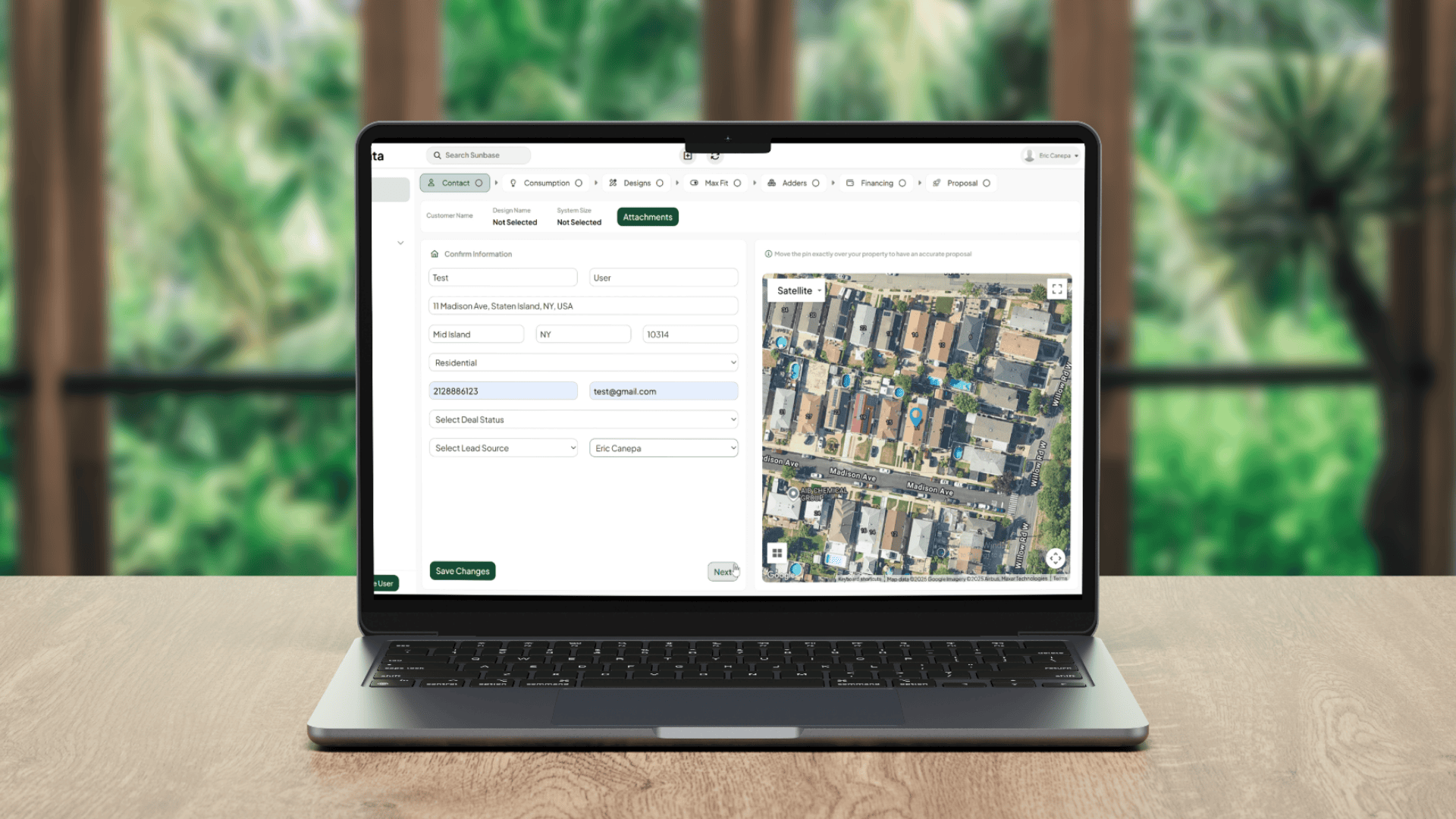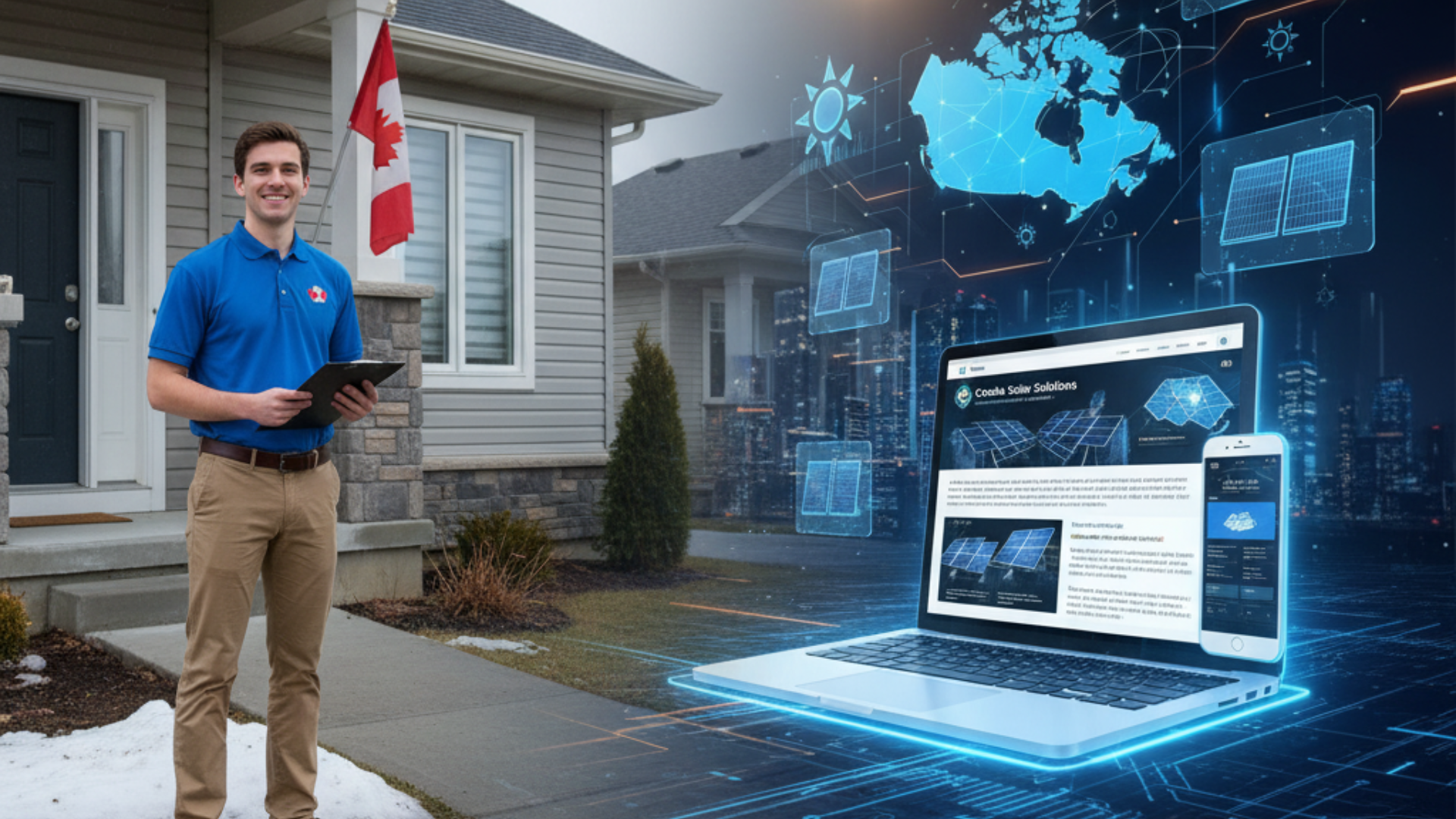January 9, 2024
11 Door-to-door Sales Tips
If you're looking to elevate your door-to-door sales game, you've come to the right place!
While selling from doorstep to doorstep can be challenging and overwhelming, we have 11 simple yet effective tips to ensure your success in this essential aspect of selling.
So, let's get started!
Brief Overview of Door-to-Door Sales
Door-to-door sales is a direct marketing strategy where sales representatives visit potential customers at their homes to promote and sell products or services. This approach involves face-to-face interactions, allowing salespeople to deliver personalized pitches, address customer concerns, and build immediate rapport.
Historically, door-to-door sales industries have been employed across various sectors, from household goods and cosmetics to insurance and home security systems. While it offers advantages such as personal connections and immediate feedback, this method faces challenges like perceived intrusiveness and time-intensiveness.
Mastering Door-to-Door Sales: 11 Effective Tips
Mastering the art of D2D sales requires a strategic approach and effective interpersonal skills. Here are eleven door-to-door sales tips to enhance your success in this dynamic field:
1. Prepare Yourself: Know Your Audience and Their Needs
Before knocking on any door, the sales team must thoroughly research the target demographic. Understand their preferences, pain points, and how your product or service can address their needs.
Being a well-prepared door-to-door salesperson instills confidence and positions you as a knowledgeable and trustworthy representative.
Conduct Thorough Market Research:
Dive into market data and demographic studies to gain a deep understanding of the audience you'll be engaging with.
The key to door-to-door sales is demographics, including age, preferences, and socio-economic factors, to tailor your approach effectively.
Utilize online tools, surveys, and local community insights to refine your knowledge of the specific needs within the target demographic.
Create Detailed Customer Profiles:
A door-to-door salesperson must develop individual customer profiles that go beyond basic demographics.
Consider factors such as hobbies, lifestyle choices, and purchasing behaviors to create a nuanced understanding.
These detailed profiles in door-to-door selling serve as a foundation for personalized interactions, allowing you to connect with potential customers on a more relatable level.
Product Alignment with Customer Needs:
Align your product or service offerings with the identified needs and preferences of your target audience.
Sales reps should tailor their sales pitch to emphasize how their offerings directly address the challenges or desires of the customers.
Demonstrating a clear understanding of their needs builds trust and increases the likelihood of successful engagement.
2. Timing is Crucial: Knock at the Right Time
Respect the homeowner's schedule. Avoid knocking during rush hours, meal times, or late evenings. Door-to-door salespeople must choose times when people are more likely to be available and receptive, enhancing the chances of positive interaction.
Avoid Peak Hours:
Steer clear of times when homeowners are likely to be busy, such as rush hours in the morning and evening.
Respect lunch breaks and family dinner times to ensure your arrival is perceived as convenient rather than intrusive.
By avoiding peak hours, you increase the chances of catching potential customers when they are more receptive.
Choose Strategic Time Slots:
Select time slots that align with common breaks or moments of relaxation, such as late afternoons or early evenings.
A door-to-door salesperson should consider weekends for households where occupants may have more time to engage in a conversation.
Strategic timing enhances the likelihood of engaging with individuals who are open to discussions and less rushed.
Be Mindful of Seasonal Variances:
A door-to-door salesperson should acknowledge seasonal variations that may impact people's routines and availability.
Adjust your schedule to account for changes in daylight hours and outdoor activities.
Sensitivity to seasonal nuances ensures that you approach potential customers at times when they are more likely to be at home and receptive to your pitch.
3. Greet with a Smile: Be Polite and Approachable
One of the most important sales tips is that your initial impression matters. Greet the customer with a warm smile and maintain a polite and approachable demeanor. A friendly introduction sets the tone for a positive interaction.
Warm and Genuine Greetings:
Start the interaction with a warm and genuine smile to create a positive first impression.
Use friendly and open body language, such as maintaining eye contact and offering a friendly nod.
A sincere smile sets a welcoming tone and makes homeowners more receptive to your presence.
Politeness in Communication:
Employ polite language and a courteous tone when introducing yourself and explaining the purpose of your visit.
Use "please" and "thank you" to convey respect and appreciation throughout the conversation.
Politeness fosters a positive atmosphere, contributing to a more comfortable and engaging interaction.
Adapt to Cultural Sensitivities:
Be mindful of cultural differences and adapt your greeting style to resonate with diverse backgrounds.
Consider regional customs related to greetings and incorporate them respectfully into your approach.
Cultural sensitivity demonstrates your awareness and respect, building a foundation for a more harmonious engagement.
It's important to have a Door-to-Door sales app for increased efficiency, read here to find out the Best D2D Sales App
4. Clear and Concise Introduction: Introduce Yourself and Your Product
Present a clear and concise introduction. State your name, the purpose of your visit, and the product or service you're offering. Avoid lengthy explanations at the beginning to capture the customer's attention effectively.
Name and Purpose in the Opening Line:
Begin with a straightforward introduction, stating your name and the purpose of your visit.
Clearly articulate why you are at their doorstep, setting the stage for a transparent and focused conversation.
A concise opening sets a professional tone and immediately communicates the nature of your interaction.
Highlight Key Benefits Early On:
Quickly highlight the key benefits of your product or service to capture the homeowner's interest.
Emphasize how your offering addresses common needs or pain points, making it relevant to their lifestyle.
Engage them by showcasing the value they stand to gain, encouraging further interest and attention.
Encourage Questions from the Start:
Open the door for questions by expressing your openness to address any inquiries they may have.
Invite homeowners to participate in the conversation early on, fostering an interactive and engaging exchange.
By encouraging questions, you create a dialogue that allows you to tailor your presentation to their specific concerns and interests.
5. Active Listening: Understand Your Customer's pain points and needs
Listening is a powerful tool. Pay close attention to your customer's responses and cues. Understand their needs, concerns, and priorities. Tailor your pitch based on the information they share to create a more personalized and impactful presentation.
Give Full Attention:
Demonstrate attentiveness by giving your full focus to the homeowner during the conversation.
Avoid distractions and maintain eye contact, signaling genuine interest in what they have to say.
Active listening begins with undivided attention, laying the groundwork for a meaningful exchange.
Clarify and Paraphrase:
Clarify understanding by summarizing or paraphrasing key points the homeowner shares.
Rephrase their concerns or needs to confirm your comprehension and ensure accurate interpretation.
This technique not only demonstrates active engagement but also prevents misunderstandings that could arise during the conversation.
Ask Probing Questions:
Prompt deeper discussions by asking open-ended questions that encourage homeowners to share more details.
Seek insights into their preferences, challenges, and specific requirements to tailor your pitch effectively.
Probing questions demonstrate a genuine interest in understanding their unique needs, fostering a more personalized interaction.
6. Build Trust: Be Genuine and Honest
Trust is the foundation of successful sales. Be genuine and honest in your interactions. Avoid exaggerated claims or pushy tactics. Building trust establishes a positive rapport and increases the likelihood of a successful sale.
Authenticity in Communication:
Communicate with authenticity and sincerity, reflecting your genuine commitment to the homeowner's well-being.
Avoid scripted or overly rehearsed dialogue, opting for a more natural and spontaneous conversation.
Authenticity builds a foundation of trust, as homeowners are more likely to engage with a representative they perceive as genuine.
Transparent Information Sharing:
Be transparent about your product or service, providing clear and honest information.
Address potential drawbacks or limitations upfront, demonstrating a commitment to openness.
Open and honest communication fosters trust, as homeowners appreciate forthrightness in the sales process.
Follow Through on Commitments:
If you make promises or commitments during the conversation, ensure you follow through on them.
Whether it's providing additional information or offering a follow-up, reliability reinforces trust.
Consistent follow-through establishes your credibility and reliability, crucial elements in building and maintaining trust with potential customers.
7. Effective Demonstration: Showcase the Benefits of Your Product
Demonstrate how your product or service can directly benefit the customer. Use tangible examples or, if applicable, provide a hands-on demonstration. Highlighting the value your offering brings builds a compelling case for the customer to consider.
Engage Multiple Senses:
Incorporate visual, auditory, and tactile elements into your product demonstration to engage multiple senses.
Allow homeowners to experience the product, creating a more immersive experience.
A multi-sensory approach enhances the impact of your demonstration and leaves a lasting impression.
Highlight Key Features:
Focus on key features that directly address the homeowner's needs or concerns.
Clearly articulate how these features translate into tangible benefits for them.
By aligning the demonstration with their specific interests, you make the product more relatable and compelling.
Tailor to Individual Interests:
During the demonstration, pay attention to cues that indicate individual preferences or priorities.
Customize your presentation to highlight aspects of the product that align with their unique interests.
Tailoring the demonstration to their specific needs increases the relevance of your offering and enhances its perceived value.
8. Knowledge is Power: Have Answers Ready
A sales rep must always anticipate potential questions and concerns. Ensure you have a thorough understanding of your product or service, pricing details, and any other relevant information. Having well-informed responses reinforces your credibility and instills confidence in the customer.
Comprehensive Product Knowledge:
Acquire a thorough understanding of your product or service, including technical details and specifications.
Anticipate potential questions and concerns, ensuring you are well-prepared to provide accurate and detailed information.
Confidence in your product knowledge instills trust and positions you as a credible authority.
Address Common Concerns Proactively:
In door-to-door selling, you should be able to identify common objections or concerns that potential customers may raise and proactively address them.
Prepare clear and concise responses to alleviate any hesitations or uncertainties they might have.
Proactively addressing concerns demonstrates foresight and reinforces your readiness to handle any challenges.
Stay Informed About Industry Trends:
Stay abreast of industry trends and advancements related to your product or service.
Knowledge of the latest developments enhances your credibility and allows you to position your offering within a broader context.
Being well-informed not only strengthens your responses but also positions you as a representative who is current and knowledgeable about the market.
9. Closing Statement: Summarize and Prepare to Conclude
As you conclude your pitch, have a concise closing statement ready in your sales script. Summarize the key benefits of your product, address any remaining concerns, and express your willingness to assist further. A well-crafted closing statement leaves a positive lasting impression.
Recap Key Benefits:
Summarize the key benefits of your product or service.
Reiterate how your offering uniquely addresses the homeowner's needs or concerns.
A brief recap reinforces the value proposition and keeps the focus on the positive aspects of your pitch.
Address Any Remaining Concerns:
Open the floor for any final questions or concerns the homeowner may have.
Clarify any lingering doubts and provide additional information to ensure they have a comprehensive understanding.
Addressing concerns at this stage reinforces your commitment to transparency and customer satisfaction.
Express Appreciation and Next Steps:
Express gratitude for the homeowner's time and attention throughout the interaction.
Clearly outline the next steps, whether it's providing additional materials, scheduling a follow-up, or allowing them time to make a decision.
Concluding on a positive note and with a clear plan for the next steps leaves a favorable impression and facilitates a smooth transition toward potential future engagement.
10. Follow-Up: Ensure Customer Satisfaction
Your interaction doesn't end at the doorstep. After the visit, follow up with your customers. Check-in to ensure satisfaction, answer any post-purchase questions, and express gratitude for their time.
A thoughtful follow-up builds customer relationships and lays the groundwork for potential future engagements.
Post-Visit Communication:
The door-to-door salesman should initiate post-visit communication to express appreciation for their time and interest.
Reiterate key points from your interaction and emphasize your commitment to customer satisfaction.
Opening a line of communication reinforces your dedication to building a positive relationship beyond the initial encounter.
Seek Feedback:
Encourage homeowners to provide feedback on their experience and the information presented.
Actively seek both positive feedback and constructive criticism to understand areas for improvement.
Feedback not only helps you refine your approach but also demonstrates your commitment to continuous improvement.
Address Additional Inquiries:
Be proactive in addressing any additional inquiries that may arise after the visit.
Provide prompt and thorough responses to ensure homeowners have all the information they need to make an informed decision.
Timely and informative follow-up builds trust and reinforces your commitment to supporting customers throughout their decision-making process.
11. Automating Solar Sales: Using Sunbase D2D Sales Software
Automating solar sales through D2D sales software offers mulitple benefits for sales professionals in the industry.
It can help them manage their leads more efficiently, improve their sales pitch, and ultimately close more deals.
Features of Sunbase's Door-to-Door Sales Software:
- Target Area Management: Easily create and assign target areas for your canvassers, allowing them to focus their efforts on specific neighborhoods, blocks, and streets.
- Auto-Capture Property Addresses: Streamline lead entry and management by automatically capturing property addresses, saving time and reducing manual data entry errors.
- Appointment Scheduling: Turn pins on a map into leads and book appointments with the web scheduler tool, ensuring efficient and organized appointment management.
- Canvassing Reports: Generate detailed reports that outline key performance indicators, providing valuable insights into the productivity and effectiveness of your door-to-door marketing efforts.
With Sunbase's Door-to-Door Sales Software, you can automate and optimize your solar sales process, enhancing productivity, efficiency, and overall campaign success.
Conclusion
Being an effective salesperson is not something that one can master overnight. It requires time, effort, and dedication. However, if the sales teams keep the above-mentioned tips and sales strategies in mind and practice them consistently, you will be well on your way to becoming a successful and confident salesperson.
Make sure you have a well-rounded sales approach, build strong relationships with customers by being genuine and honest, understand their needs, and make sure your product lives up to their expectations. Lastly, remember to follow up to ensure customer satisfaction. Put yourself out there and accept the challenge of becoming an exceptional salesperson today.
About Sunbase
Sunbase helps solar companies succeed through a suite of Solar CRM tools like Solar Lead Management Software, Solar Proposal Software, etc.! To book your free demo or an appointment, contact us here!
One Platform. Zero Chaos. Run Your Entire Business in One Place.
Sunbase replaces your CRM, proposals, scheduling, job tracking, and reporting tools — all inside one clean, connected platform.
About Sunbase
The All-In-One Platform to Run Your Entire Business
Sunbase helps you organize operations, streamline daily workflows, and manage everything - from first customer contact to final project deliver- in one connected system.
Our Mission
- Organize your business.
- Optimize your workflow.
- Automate what slows you down.
Why Businesses Choose Sunbase
One Connected Workflow
Replace scattered tools and manual processes with a single platform that brings together your team, tasks, customers, jobs, and performance data.
🌎 Global Presence
Serving the United States, Canada, India, LATAM, Australia, and 10+ international markets.
👥 11,000+ Users
Trusted by contractors, installers, project managers, sales teams, and field technicians.
🏗️ Built for All Sizes
From small contracting teams to fast-growing enterprises, Sunbase adapts to your workflow.
Useful Links For You
Stop Managing Your Business Manually. Automate It.
Sunbase automates workflows, reduces mistakes, and helps your team get more done - without hiring extra staff or juggling multiple tools.











